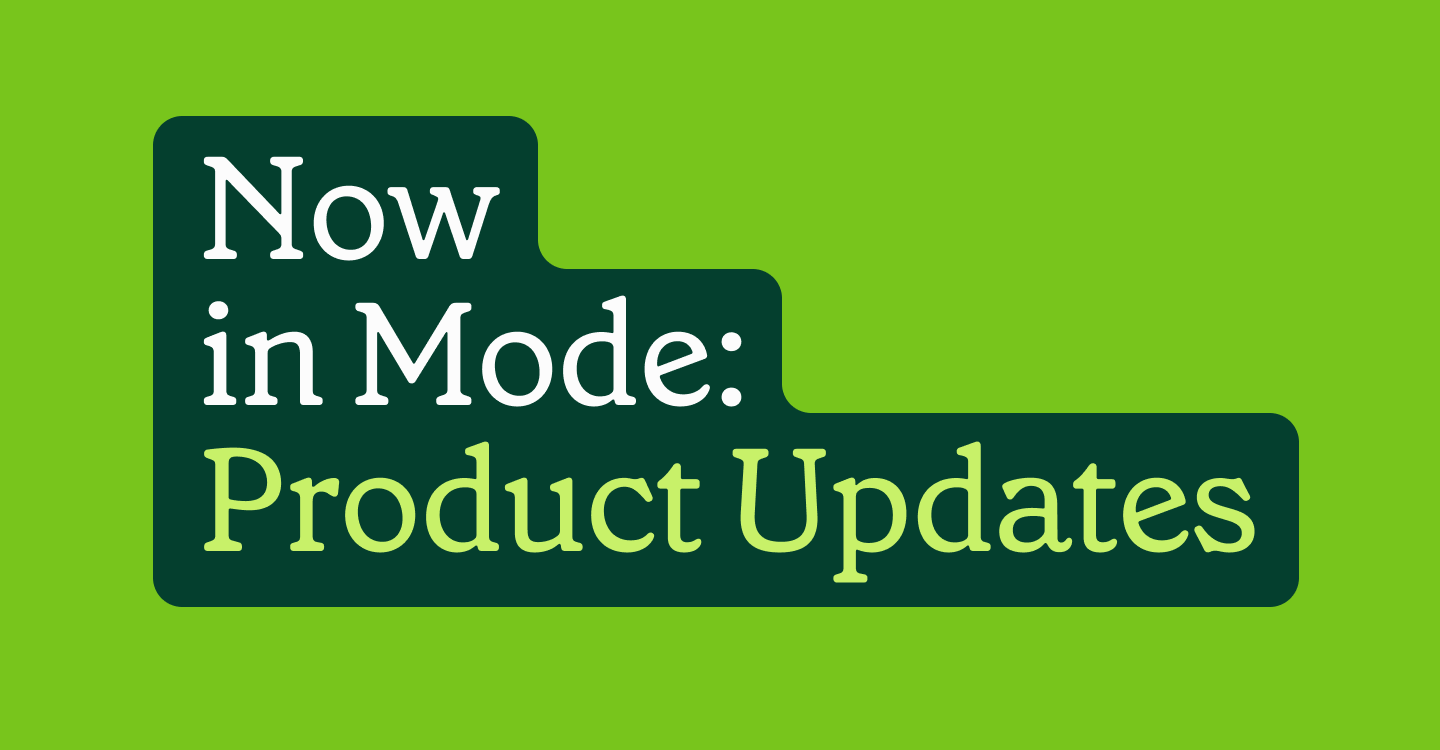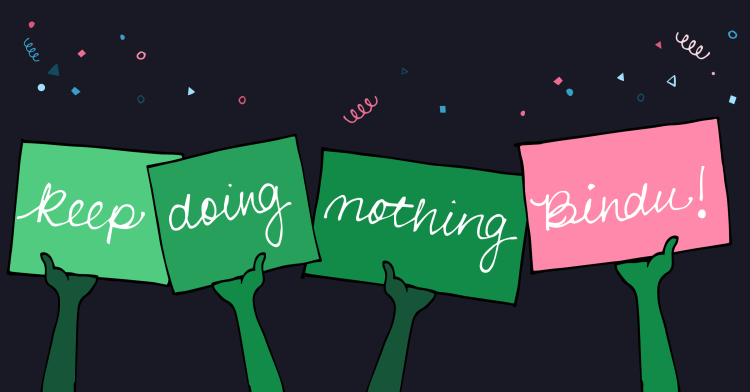A Note From the Mode Founders
Benn Stancil, Co-founder & CTO; Derek Steer, Co-founder & former CEO; Josh Ferguson, Co-founder & Chief Architect
June 26, 2023
NaN minute read

Nine years ago, Mode launched its first product: A text box for writing a SQL query, and a few basic charts for graphing its results. It didn’t seem like much—not to us, who were a little embarrassed by its simplicity; not to investors, who were skeptical that data teams were a market worth selling to; and not to Hacker News, who said it was something any competent engineer could build in a weekend. But to analysts, it proved to be a revelation. Our early users—a group who we’ll always be grateful for, for their patience, honest feedback, and most of all, willingness to gamble—told us Mode was the first product that reveled in the unglamorous aspects of their job: SQL, ad hoc analysis, and constant iteration between a data team and their coworkers. It was a product, they said, that understood how they worked, and got out of their way.
Over the years, we added a lot more features, and a lot more people to our team. But the company’s core promise stayed consistent: If you’re an analyst, we’re here to make your life a little easier.
We knew from the beginning that that effort would extend beyond building for data teams. Analysts and data scientists don’t work in isolation; everything they do is in partnership with an internal colleague or external customer. Data teams aren’t happy unless their constituents are happy—and to serve data teams, we had to serve their constituents, too.

Learn about ThoughtSpot + Mode!
See firsthand in our webinar how we're building a more collaborative, flexible, and accessible future of BI together with ThoughtSpot.
Our first major commitment to this group came in 2017, when we released a major rewrite of our charting functionality. Our new graphs weren’t simple plots of query results; they were designed to be analytical tools unto themselves. With this launch, customers could explore, enrich, and analyze disaggregated datasets using a drag-and-drop interface and a familiar function language.
More than a set of features, the release was a stake in the ground: We believed the best data product would be the one that rejected the distinction between business intelligence and advanced analytics. We launched our new charting under that banner—”code-first and code-free”—and told our customers that our mission was the two-in-one unified experience.
The vision was overwhelmingly well-received. “Self-serve” functionality had been our most requested feature for years.
But it wasn’t entirely well-received. A few customers sent us concerned emails: They bought Mode because they wanted a product that was built, as we often said, by analysts, for analysts. They wanted a specialized power tool. Though they liked the theoretical promise of a product that could do it all—no team can escape the need to build executive dashboards and business reports—they were worried about us losing focus. Could a small startup really do both? BI is a well-established category; people are accustomed to a feature list a mile deep. Would we chase that list? Would we lose our soul, to move up market, to become enterprise ready, to forsake the community user for the corporate buyer?
Deep down, we honestly weren’t sure. Building a BI tool is hard—harder, even, than we realized ourselves. We didn’t see it as that distinct from what we’d already created—that was, after all, exactly the point—but it added a lot to our to-do list.
Still, the risk felt worth it. We set out to make the best tool possible for data teams; this is what they told us they wanted, with their feedback and their financial commitments. It'd be a challenge, but, go big, right?
That was the course we charted. Six years into the journey, I’m extraordinarily proud of how far we've come—as a product, and as a team that can market, sell, support, and enable that product. With our customers prodding us forward—add this, and we can finally stop using some other product; add that, and we'll consolidate everything on Mode—we grew more confident in the ambition to build a true Modern BI platform. The only question was: how quickly we could get there?
------
This is where we were when ThoughtSpot approached us earlier this year about a “strategic partnership.” I was initially skeptical. In many ways, they were our polar opposites: A favorite in the enterprise; a champion of the business user; a BI tool that was no-code if there ever was one. If us building drag-and-drop features was risking our soul, joining forces with ThoughtSpot was selling it, literally. But after a couple of conversations with their team, I realized I was wrong. ThoughtSpot hadn’t been living an opposing life, but a parallel one. Just as we wanted to build a beloved experience for analysts to work with data, they wanted to build the same thing for everyone else. More importantly, they believed the same thing we believed: That the most useful analytics product of the future wouldn’t be code-first or code-free, but both. It would be one that enabled an entire spectrum of roles, from data scientists, to technically comfortable business users, to technically uncomfortable business users.
In other words, Mode and ThoughtSpot were heading towards the exact same destination, but approaching it from different sides. And a phone call, we both realized, could save us both a lot of trouble. As we had more of those phone calls, we quickly moved past whether or not an acquisition made sense, and started talking about what an acquisition made possible. At Mode, we could double-down on building a leading, consumer-grade experience for analysts. We could bring code-first data exploration and modeling capabilities to ThoughtSpot’s BI suite. We could build a true “multi-modal” product that meets every person and their technical preference where they are. And we could infuse generative AI—a technology that ThoughtSpot has been developing on top of for years, well before the latest hype cycle—across the entire platform. Together, we realized, we wouldn’t just get where we both wanted to go, and we wouldn’t just get there faster; we would be able to go much further.
Today, we start that journey together—not in a new direction, but towards a bolder destination.
------
Before we put our heads down and carry on, one more note about today: Nothing on the road ahead would be possible without the tremendous effort of countless people who paved the road behind us. For those of you who’ve followed Mode, there are names that you know—executives, leaders, customer logos and investment firms. But there are also thousands of names that you don’t, of people who’ve quietly worked in the dark, so that others’ names can get written in the lights.
To those people—thank you. Thank you for your confidence to bet on us; thank you for your effort that had no guarantee of a reward; thank you for your patience as we learned how to build a company, and for forgiving the mistakes we made as we did. Mode’s legacy—and now, ThoughtSpot’s legacy—is your legacy, too.

Learn about ThoughtSpot + Mode!
See firsthand in our webinar how we're building a more collaborative, flexible, and accessible future of BI together with ThoughtSpot.
Get our weekly data newsletter
Work-related distractions for data enthusiasts.




